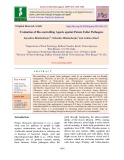
Curvularia lunata
-
Từ rễ lúa thu thập từ Long An và Bình Thuận, phân lập được 3 chủng vi khuẩn nội sinh, nghi ngờ thuộc chi Bacillus. Các chủng thể hiện hoạt tính phân giải phosphate vô cơ khó tan, sinh IAA và kháng nấm gây bệnh đốm nâu Curvularia lunata và Curvularia geniculata trên lúa trong các thử nghiệm in vitro. Chủng B1 thể hiện hoạt tính mạnh nhất được giải trình tự gene 16S rRNA và định danh là Bacillus aryabhattai.
 5p
5p  vibigates
vibigates
 31-10-2021
31-10-2021
 39
39
 2
2
 Download
Download
-
Green synthesis of nanoparticles is one of the most effective processes at a very affordable cost. Green synthesized nanoparticles have wide range of antimicrobial property. Thevetia peruviana is commonly called as yellow oleander has chemicals (thevetin A and thevetin B) which help in bio-reduction of metals and antimicrobial property.
 6p
6p  cothumenhmong9
cothumenhmong9
 18-01-2021
18-01-2021
 10
10
 1
1
 Download
Download
-
A survey was conducted on Swarna cultivar (MTU 7029) of rice during Kharif 2013, 2014, 2015 and 2016 at Nadia district of West Bengal to record the fungal disease and their respective yield loss. Ten diseases (Leaf blast, Sheath blight, Sheath rot, Brown spot, Brown Leaf Spots caused by Curvularia lunata, Stackburn disease, Leaf spot caused by Nigrospora oryzae, Stem rot, Rotting by Choanephora cucurbitarum and False smut) were based on visual observation on Swarna rice cultivar and yield loss due to respective disease was calculated by measuring test weight (gm) of rice grains.
 12p
12p  caygaocaolon8
caygaocaolon8
 07-11-2020
07-11-2020
 11
11
 2
2
 Download
Download
-
Cowpea is an important leguminous vegetable crop usually grown during Pre-kharif, Kharif and Rabi season under West Bengal condition. Now days this crop is severely affected due to biotic stress. Seven foliar pathogens namely Alternaria alternata, Colletotrichum capsici, Corynespora cassicola, Rhizoctonia solani, Fusarium ciceri, Sclerotium rolfsii and Curvularia lunata were isolated from the diseased cowpea crop in Jaguli Instructional farm of BCKV.
 14p
14p  caygaocaolon8
caygaocaolon8
 07-11-2020
07-11-2020
 13
13
 1
1
 Download
Download
-
An experiment was conducted to evaluate the effect of five plant extracts, one bio agents and one fungicide in in vitro and in vivo againstleaf spot of maize caused by Curvularia lunata. Mancozeb @ 0.25% was effective in the inhibition of mycelial growth (69.35%) of C.lunata.
 6p
6p  caygaocaolon6
caygaocaolon6
 30-07-2020
30-07-2020
 27
27
 1
1
 Download
Download
-
Tomato crop exhibited symptoms occurring on the oldest leaves as small, brownish to black lesions which are due to foliar blight disease and it was caused by a complex of mycoflora viz, Alternaria solani, Fusarium oxysporum and Curvularia lunata. The disease complex causes considerable yield as well as post-harvest losses. A. solani produced blackish, fluffy mycelium with septate, beaked conidia on PDA. Fusarium oxysporum exhibited dull to fluffy white mycelium with slight faint reddish tinge at the middle.
 5p
5p  gaocaolon5
gaocaolon5
 14-06-2020
14-06-2020
 12
12
 2
2
 Download
Download
-
The effect of different media (Oat meal agar, Corn meal agar, Czapeck’s Dox agar, Potato dextrose agar, Richard’s synthetic agar and 2% malt extract agar) on light wavelengths (red, yellow, blue, green) and temperatures (10, 15, 20, 25, 30, 35⁰ C) were examined to determine optimal conditions for mycelial growth of Curvularia lunata causing Curvularia leaf spot of maize under in vitro conditions. Amongst media under different temperatures, maximum mycelial growth (88.17 mm) was found in Potato dextrose agar 30⁰ C followed (84.33 mm) by Potato dextrose agar at 25⁰ C.
 4p
4p  trinhthamhodang1213
trinhthamhodang1213
 02-06-2020
02-06-2020
 16
16
 1
1
 Download
Download
-
Đề tài nghiên cứu này nhằm cung cấp thêm các thông tin về đặc điểm hình thái, sự đa dạng di truyền của nấm C. lutana phục vụ cho công tác bảo vệ thực vật cũng như chọn tạo giống kháng bệnh.
 5p
5p  quenchua5
quenchua5
 26-05-2020
26-05-2020
 69
69
 1
1
 Download
Download
-
The scanning electron micrograph of various fungi growing over sorghum and wheat seeds showed that, the conidia of Curvularia lunata were slightly curved, three septate, central cell were broad having surface ornamentation, darker than the end cell and arranged on sympodially branched conidiophores on sorghum seed.
 6p
6p  trinhthamhodang5
trinhthamhodang5
 16-05-2020
16-05-2020
 11
11
 1
1
 Download
Download
-
Fifty seed of sorghum, wheat and pearlmillet from infected seed lot having characteristics symptom of seed borne fungi. Seed of such symptoms got infected of Curvularia lunata, Bipolaris sorghicola and B. sorokiniana infected seed of sorghum wheat and pearlmillet. Histopathology of apparently in infected seeds confined to mycelium fragments of Curvularia lunata in seed coat and endosperm, embryonic region of sorghum, wheat and pearlmillet seed. Sorghum and pearlmillet seed indicates the presence of brown coloured thicks mycelial fragment of Bipolaris sorghicola in pericarp and embryo region.
 5p
5p  trinhthamhodang5
trinhthamhodang5
 16-05-2020
16-05-2020
 10
10
 1
1
 Download
Download
-
Meat is a highly perishable food which is easily susceptible to microbial contamination. There are various factors which affect the freshness of the meat the most important factors are storage temperature, time of exposure of meat to extrinsic factors and handling of carcass during and after slaughter. Hence a study was conducted to compare the microbial load in chevon carcass hanged at room temperature for 6 hours and at chiller temperature for 30 hours. Twenty four numbers of 6 months old tellicherry young male goats were selected and they were slaughtered by the standard procedure.
 7p
7p  nguaconbaynhay5
nguaconbaynhay5
 16-05-2020
16-05-2020
 8
8
 0
0
 Download
Download
-
In the present investigation efforts were made to evaluate different rice based fungicides viz; Trifloxystrobin (25%) + Tebuconazole (50%) WG, Tebuconazole (25.9%) EC, Carbendazim (50%) WG, Propiconozole (25%) EC, Hexaconazole (5%) EC and Mancozeb (63 % WP) against the mycelial growth of rice grain discoloration causing pathogen Curvularia lunata. Among all the fungicides tested, Trifloxystrobin (25%) + Tebuconazole (50%) WG and Tebuconazole proved to be completely effective in inhibiting the growth of the pathogen at low concentrations i.e.
 7p
7p  nguaconbaynhay5
nguaconbaynhay5
 16-05-2020
16-05-2020
 11
11
 1
1
 Download
Download
-
Sorghum [Sorghum bicolor (L.) Moench] is a vital life-sustaining food crop for human being as well as for livestock in many parts of world. In India, Maharashtra, Karnataka, Andhra Pradesh, Madhya Pradesh, Gujarat and Tamil Nadu are major sorghum growing states. Therefore, investigation was undertaken during 2016 at N. A. U., Navsari on isolation of sorghum seed infecting fungi, (Colletotrichum sp., Fusarium moniliforme, Alternaria alternata, Curvularia lunata, Macrophomina sp., Aspergillus niger and A. flavus.
 4p
4p  nguaconbaynhay5
nguaconbaynhay5
 11-05-2020
11-05-2020
 13
13
 1
1
 Download
Download
-
A study was conducted to determine the mycoflora associated with pigeon pea cultivar MA6 and effect of botanicals on growth of mycoflora. The dominant fungi observed on pigeon pea cultivar MA6 seed were Rhizopus stolonifer, Aspergillus niger, A. flavus, Penicillium citrinum, P. rubrum, Alternaria alternata, A. solani, Curvularia lunata, Fusarium oxysporium. Among the treatments, the sulphate and nitrate treated seeds showed the less number of fungi isolated in comparison to untreated seeds. The nature of fungal flora had changed with prolongation of storage period of pigeonpea seeds.
 12p
12p  nguathienthan3
nguathienthan3
 27-02-2020
27-02-2020
 14
14
 1
1
 Download
Download
-
All the tested fungi showed pronounced inhibitory effects on seed germination of brinjal cultivars as compared to control. All the five cultivars were inoculated with the Fusarium oxysporum, Phoma sp., Penicillium sp., Curvularia lunata, Alternaria tenuis, Aspergillus flavus and A. niger. Lowest seed germination was found in cultivar ABH-1 (56.63%). Significantly highest seed germination was observed in cultivar Doli-5 (72.13%). F. oxysporum, Phoma sp., Penicillium sp., C. lunata, A. tenuis, A. flavus, A. niger and control (uninoculated) showed average germination per cent 66.4, 70.3, 61.
 7p
7p  cothumenhmong3
cothumenhmong3
 22-02-2020
22-02-2020
 16
16
 1
1
 Download
Download
-
Bio-controlling of potato foliar pathogens could be an alternative and eco-friendly management. Therefore, in this trial, the antagonistic potential of some bio-controlling agents (BCAs) of Trichoderma spp. (Trichoderma asperillum, Trichoderma longibrachiatum and Trichoderma harzianum) and Bacillus spp.
 21p
21p  kequaidan2
kequaidan2
 13-12-2019
13-12-2019
 17
17
 1
1
 Download
Download
CHỦ ĐỀ BẠN MUỐN TÌM









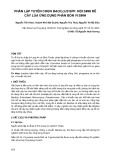


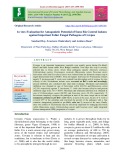

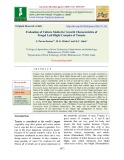

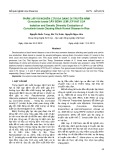

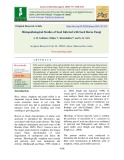
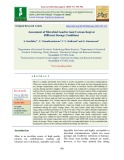
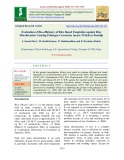
![Management of sorghum [Sorghum bicolor (L.) Moench] seed mycoflora by means of bio-agents in vitro Management of sorghum [Sorghum bicolor (L.) Moench] seed mycoflora by means of bio-agents in vitro](https://tailieu.vn/image/document/thumbnail/2020/20200511/nguaconbaynhay5/135x160/3841589213360.jpg)


